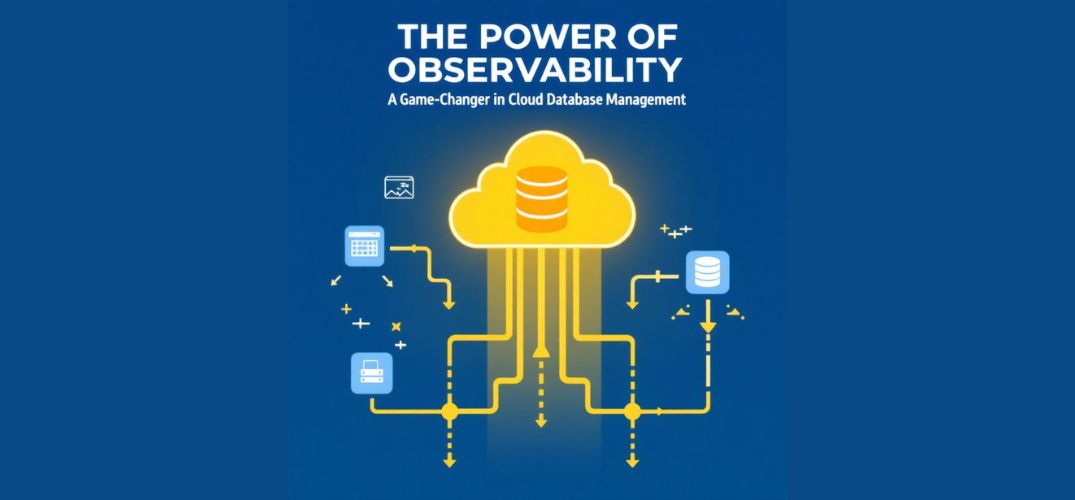In an increasingly complex world of cloud-native technologies, Maheshbhai Kansara offers deep insights into a vital but often overlooked aspect of modern cloud database architectures: observability. The author highlights how integrating observability practices from the beginning is transforming the way organizations manage and optimize their database systems. His research emphasizes that this shift not only enhances system reliability but also drives significant improvements in performance and cost efficiency.
Redefining Database Monitoring: The Three Pillars of Observability
Traditional monitoring tools often fall short in today’s fast-paced, distributed systems. Observability, however, offers a more holistic approach by enabling businesses to monitor not just what is happening in their systems but why. Observability practices encompass three core components: metrics, traces, and logs. These pillars provide unparalleled insights into system behavior, allowing teams to diagnose and solve problems with greater precision.
Metrics track the health of the system through quantitative data, providing early warning signs of potential issues before they escalate. Traces visualize the path of requests as they move through a complex system, offering clarity on dependencies and bottlenecks. Meanwhile, logs capture detailed event records that help engineers understand what went wrong, enabling faster problem resolution. He emphasizes that when organizations effectively use all three, their response times to incidents improve dramatically, with some achieving up to 89.3% faster mean time to resolution (MTTR).
Beyond Basic Monitoring: The Role of Advanced Instrumentation
Effective observability starts with proper instrumentation, a practice that involves embedding monitoring points throughout the system’s infrastructure. His work underscores the importance of automated instrumentation, which can reduce the time to implement observability by 73% and increase coverage by 38% compared to traditional manual methods. This is particularly vital for cloud-native environments like microservices, where quick, agile deployments are key.
Optimizing Performance with Data: Proactive Measures
Once observability is embedded in the architecture, organizations can move beyond reactive troubleshooting and shift to proactive performance optimization. His analysis reveals that by monitoring and analyzing database metrics in real-time, companies can identify inefficient queries, optimize resource allocation, and significantly reduce query latency. Teams can fine-tune systems before issues impact users, improving overall system efficiency and user experience.
For instance, detailed monitoring of query execution and resource consumption enables the identification of optimization opportunities, leading to a reduction in database CPU utilization by 31%. By focusing on specific workload types, organizations can also tailor caching strategies, improving cache hit rates from an average of 72.3% to 91.7%, leading to reduced database load and faster response times.
Harnessing Machine Learning for Predictive Insights
Looking ahead, machine learning (ML) is poised to play a pivotal role in the evolution of observability. He explores how ML can be used to predict database issues before they arise, shifting organizations from reactive to predictive operations. By analyzing historical telemetry data, machine learning algorithms can identify early warning signs of system degradation and even suggest query optimizations.
Anomalous behavior detection has significantly improved through ML techniques, identifying 96.7% of critical database incidents before they impact users. This predictive capability allows teams to act before problems escalate, reducing downtime and minimizing business impact.
Tackling the Security and Privacy Dilemma
While observability enhances performance and reliability, it also raises concerns about data privacy and security. He stresses the importance of safeguarding sensitive data, advocating for robust encryption, automated PII redaction, and role-based access controls. These practices ensure that observability data is both actionable and compliant with privacy regulations, particularly in industries like healthcare and finance.
Organizations can implement multi-layered security strategies that balance visibility with data protection. The integration of privacy-conscious observability frameworks ensures that critical data remains secure without sacrificing the operational benefits of comprehensive monitoring.
In conclusion, the integration of observability into cloud database systems has transformed the landscape of database management. As Maheshbhai Kansara’s work illustrates, comprehensive observability not only helps organizations detect and resolve incidents faster but also optimizes system performance proactively. With the growing complexity of cloud-native architectures, observability will continue to be a key differentiator for companies striving to maintain high availability, security, and performance.





























